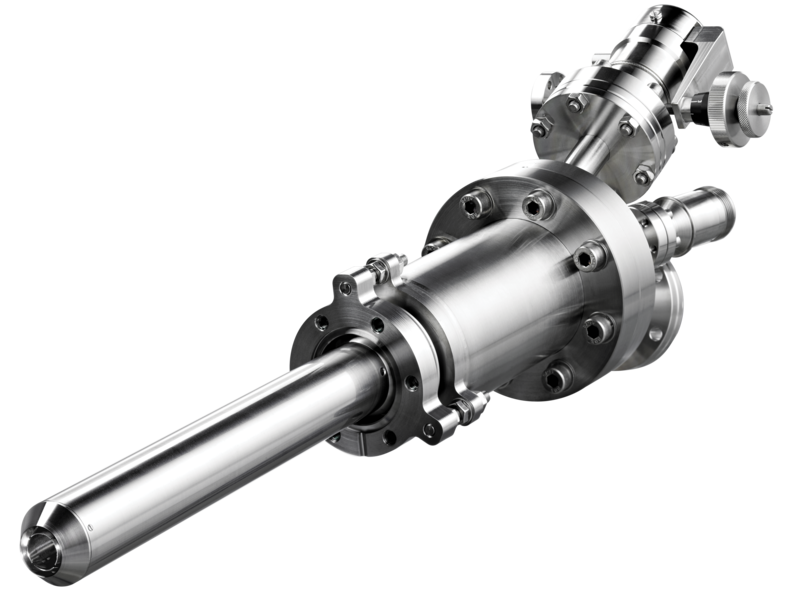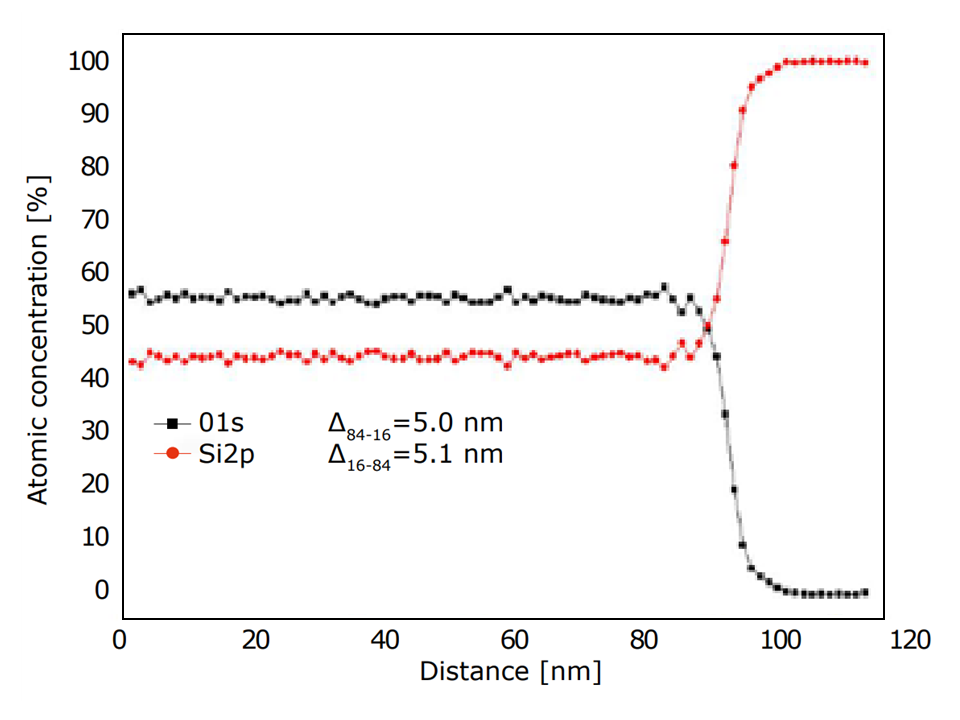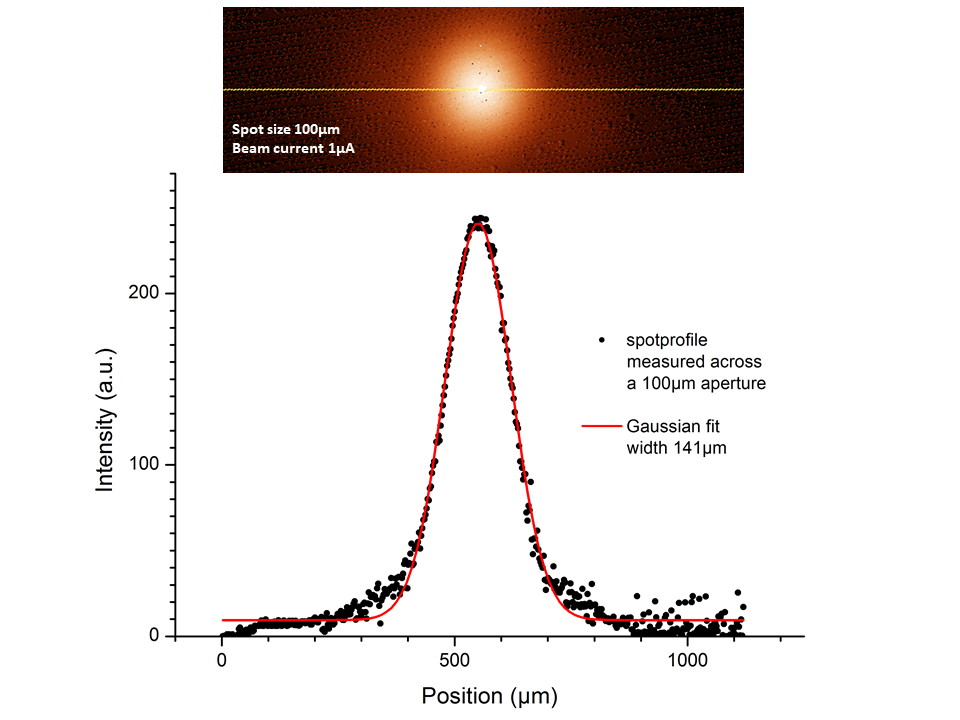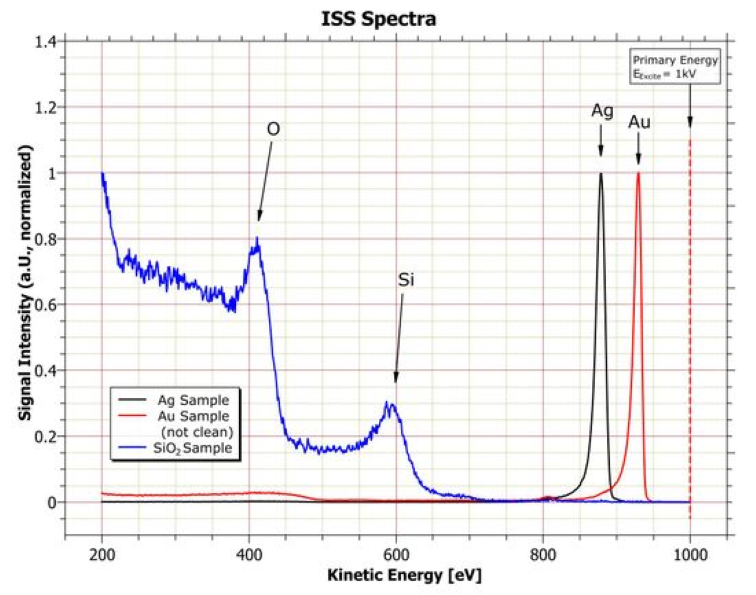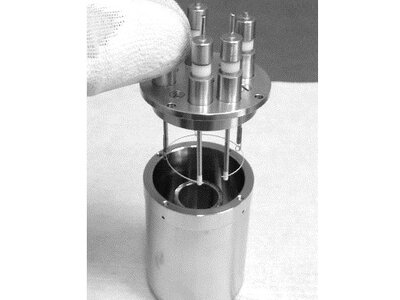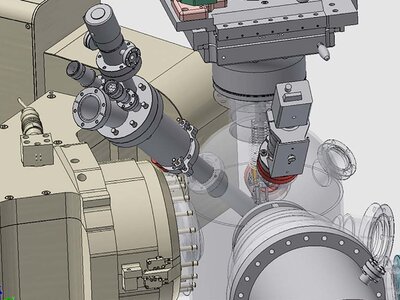FDG 150
Focused Ion Gun for Depth Profiling and Charge Neutralisation
- Universal ion source for depth profiling, sample cleaning, charge neutralisation, and ion scattering spectroscopy
- Ion energy range 10 eV to 5 keV
- High current density of > 2 mA/cm² at 5 keV
- Scan generator with scan area up to 10 x 10 mm² at 5 keV and 50 mm working distance, keystone correction algorithm
- Beam current stabilisation with regulated leak valve
- Differentially pumped to maintain good UHV conditions
The FDG 150 is a differentially pumped fine-focus ion source suitable for XPS and AES depth profiling, sputter cleaning and charge neutralisation with slow, positively charged ions. Advanced features like a regulated gas inlet, keystone correction, intermediate acceleration of slow ions set the FDG 150 apart from other depth profiling sources.
The FDG 150 is a universal UHV Ion Source for high-performance depth profile analysis with X-ray photoelectron (XPS) and Auger electron spectroscopy (AES), for sample cleaning, for sensor cleaning in scanning probe microscopes and for charge neutralisation with slow ions. It can also be used as an excitation source for ion scattering spectroscopy (ISS/LEIS).
The FDG 150 features not only an excellent ultimate spot size below 150 µm diameter and current densities exceeding 2 mA/cm² at 5 kV beam voltage, but also high currents > 100 nA for effective charge neutralisation for XPS and AES experiments at beam energies as low as 10 eV. The fully software-controlled FDG CU electronics allows for a raster area of up to 10 mm x 10 mm at 50 mm working distance. While the optimal spot size is achieved at a working distance of 30 mm, a larger working distance of 50 mm is recommended for integration on systems with many components.
An integrated port aligner allows for ± 3° mechanical adjustment, e.g. to align the source with the analysis spot of an energy analser. The FDG 150 is equipped with a DN40CF port for differential pumping to ensure that the chamber pressure stays within the range of 5x10-8 – 2x10-7 mbar during depth profiling. The FDG 150 comes with a regulated leak valve which is controlled by the ion source control unit FDG CU. The FDG 150 and the gas inlet are fully bakeable for clean gas admission to the ion source.
The scan generator comes with a fully integrated keystone correction for oblique incident angles. Operation is either stand-alone, using the control panel of the FDG CU, or with a PC via TCP/IP interface and the included ProIon PC software. ProIon is LabVIEWTM-based and allows for easy remote control and logging.
More Information
Sputter Depth Profiling
Sputter depth profiling gives access to the chemical composition of a sample in the direction perpendicular to the surface. Cycles of consecutive ion sputtering followed by a chemical composition analysis of the the topmost atomic layers with a spectroscopic technique like XPS or AES reveals the composition slice by slice.
To get accurate depth information with the sharpest possible transition regions and the ability to detect thin delta layers accurately, one has to make sure that the analysed electrons stem from a region with an even depth. To achieve this, the sputter crater is typically carved out with a small ion spot of high current density and with a size that is big enough in comparison to the analysis spot to avoid artefacts from the tails of the beam profile. The FDG 150 meets these requirements with a small spot size and high ion beam density, but also with the integrated Keystone correction mechanism that automatically adjusts the exposure time for any spot in the sputter crater to make sure that the deposited ion dose is the same for every position inside the rastered area. The size of the sputter crater can be continuously adjusted to make it just the right size for the chosen anaylsis technique.
The figure below shows a sputter depth profile of a 100 nm thick SiO2 layer on a Si(001) substrate, analysed by sputter depth profiling with monochromated XPS with a transition region of 5 nm thickness. A typical experiment to gauge the sputter rate on a well-known test object and demonstrating a state-of-the art precision in depth profiling.
Ion Scattering Spectroscopy (ISS)
Ion scattering spectroscopy (ISS) is a technique that delivers information about the atomic species present in the topmost layer of the surface. A beam of ions with a narrow energy distribution is directed onto the sample, and the scattered ions are detected with an energy analyser to deduce their kinetic energy losses. Assuming energy and momentum conservation, the masses of the scattering surface atoms be calculated from the peak positions in the kinetic energy spectrum.
The FDG 150 has successfully been used to measure ion scattering spectra of various samples, typically using He+ ions with 1 keV primary energy, but other ion species and kinetic energies are usable as well.
Specifications
10 eV to 5 keV
10 x 10 mm² @ 5 keV and 50 mm working distance
< 150 μm @ 5 keV and 30 mm working distance
> 10 μA @ 5 keV
> 100 nA @ 15 eV
> 5 mA/cm² @ 5 keV
DN40CF / 2.75′′ O.D.
DN40CF / 2.75′′ O.D.
> 30 mm
(minimum spot size at 30 mm working distance)
224 mm
Keystone
Yttrium oxide coated Tungsten
optional: Iridium filament
Regulated leak valve
5x10 -7 mbar – 1x10 -8 mbar
TCP/IP
LabVIEW™ based Software "ProIon"
For full specifications and more information about product options, please do not hesitate to contact your local sales representative. Find the contact details here: Contact Us

